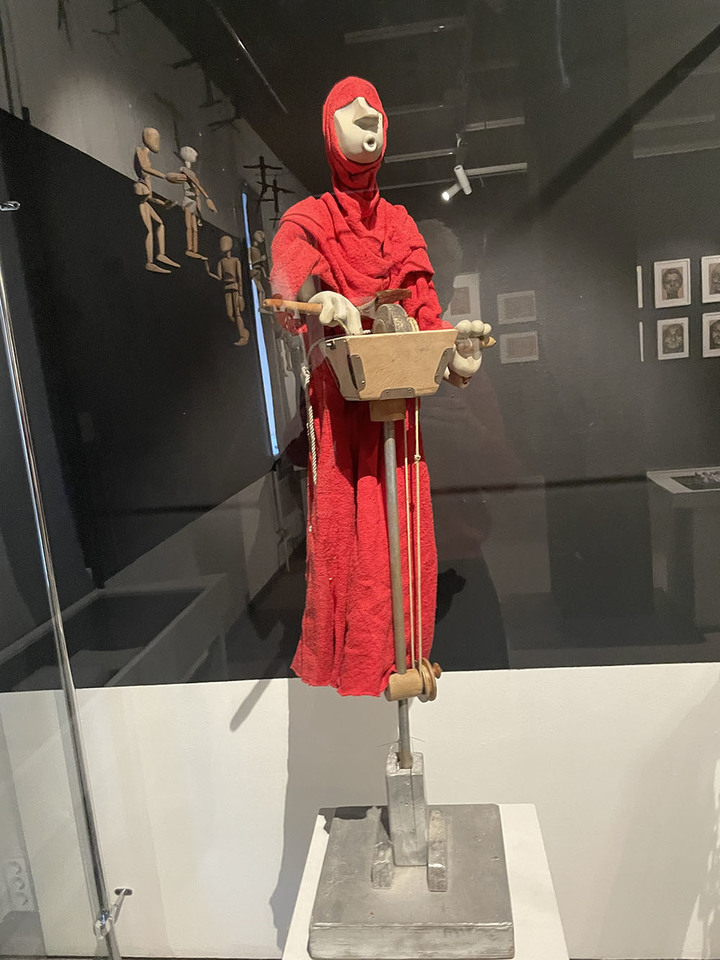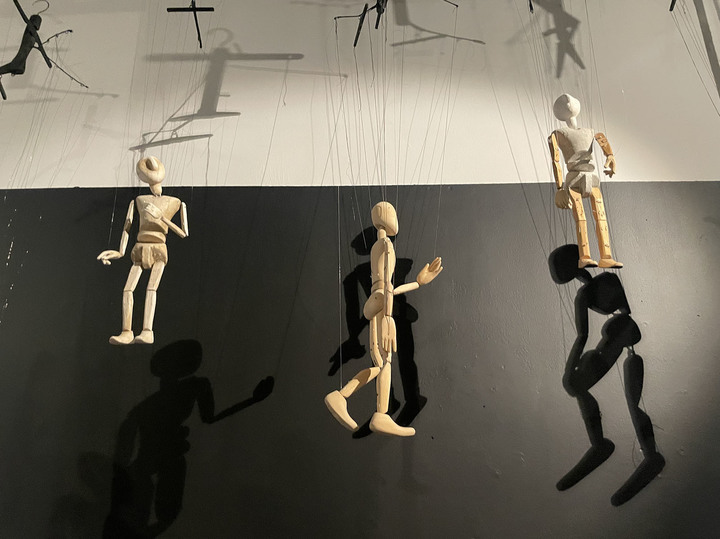An exhibition about Meyerhold has opened in Moscow: from wooden Pinocchio to artificial intelligence
[ad_1]
The exhibition traces the development of the stage movement “system”
On the occasion of the 150th anniversary of the great director Vsevolod Meyerhold, the “Na Shabolovka” Gallery opened the exhibition “Meyerhold’s Biomechanics. Actor. Puppet”, where a real theatrical laboratory was created using materials from the Museum of the Puppet Theater named after Sergei Obraztsov. The exhibition includes historical puppets of the early 20th century, including a wooden Pinocchio, made for the filming of the film “The Golden Key” (1939), and modern puppet theater characters created with the help of artificial intelligence, neural networks, nanotechnology and a 3D printer. MK found out where the famous “system” of stage movement began and where it is going.
In 1918, Vsevolod Meyerhold’s idea became a logical development of Stanislavsky’s method: with the help of “biomechanics,” an actor could show the experiences coming from within the human “I” through the physics of the body alone. The director offered a course that practically prepared the actor, helped him find the center of gravity of his body, develop coordination of movements and, with the help of them, tell a story on stage. Sergei Obraztsov, who was almost 30 years younger than Meyerhold, studied the director’s method and applied it to puppet theater. By the way, they knew each other, but casually, they never worked together. But Meyerhold knew about the activities of the young puppeteer and even gave him his portrait with a memorable inscription. It is shown for the first time at the exhibition in the gallery on Shabolovka. Under the photo you can read: “To Sergei Vladimirovich Obraztsov, an unsurpassed master in working with puppets, with greetings and wishes for further improvements in the field of puppet theater.” The theater founded by Obraztsov follows this covenant to this day.

The fact that the mechanics of Obraztsov’s first dolls is based on Meyerhold’s biomechanics can be understood by correlating the diagrams of the dolls and photographs of the early 20th century of actor-gymnasts who practiced according to the director’s system. There is, for example, an old image of the mechanisms of the characteristic entertainer from the “Extraordinary Concert”. Next to it is a diagram of the eyes of a jazz singer from the same puppet show, and a separate diagram shows her body. Dolls, like actors who work with the psychology of the body, have a core, a center of gravity, “nodes” with the help of which accents of movement are placed.
The exhibition includes theatrical dolls of various types. These include glove puppets, marionettes, and haptic-cane puppets, which are set in motion with the help of canes. The mechanics can be simple or very complex, but the point is that it should be similar to a human one, but at the same time exaggerated, accentuated, theatrical. This is the only way the body begins to speak without words.
In addition to historical exhibits, sketches, photographs and videos from performances, the exhibition has a separate room turned into a puppeteer’s workshop. Here you can find not only the craftsman’s tools (saws, chisels, knives), diagrams and samples, but also the materials from which modern dolls are created. White 3D-printed hands lie on a black square-shaped display case. One of them has six fingers – these hands of the future theatrical puppet were designed by artificial intelligence.

The Obraztsov Theater was one of the first to adopt modern technologies, and not so long ago, at its own award show, it brought to the stage a giant puppet created partly by human hands, and partly with the help of visual projection and neural networks. The theater also generates characters for new performances using a synthetic method, combining hand-made labor with advanced technologies. One of the showcases presents the materials from which puppet actors are created today: for example, Varaform, Worbla, foam propylene, bubblestar, etc. But, despite the fact that technology has gone far ahead, the basis is still the same, namely Meyerhold’s biomechanics. However, this exhibition is not only about historical and modern theatrical mechanics and body psychology. But also about how to realize the “puppet-ness” in oneself and imagine a little the “avatar” future of humanity.
[ad_2]
Source link






